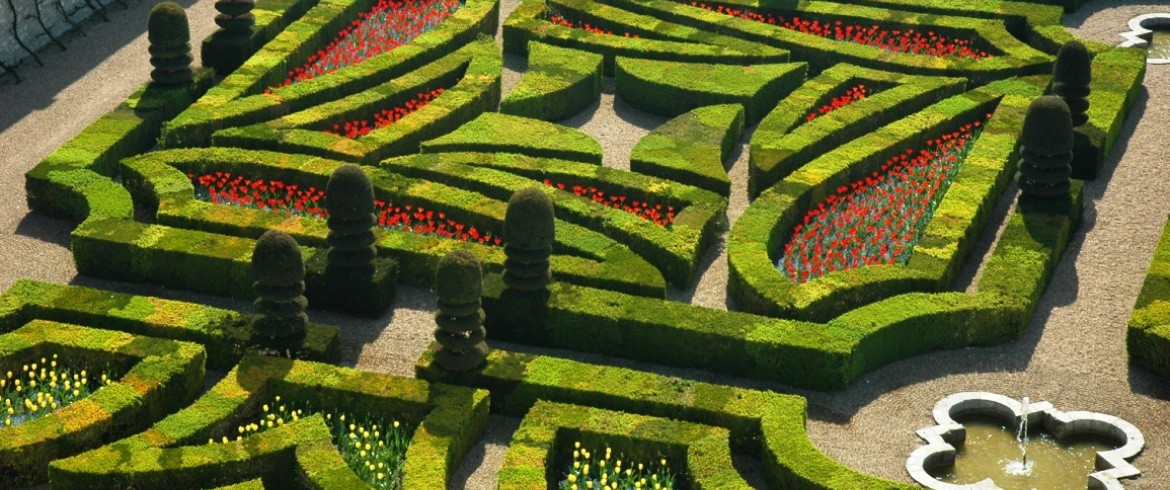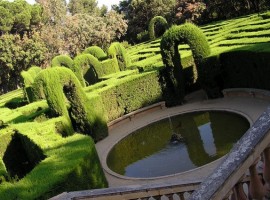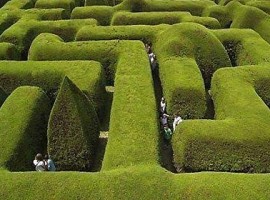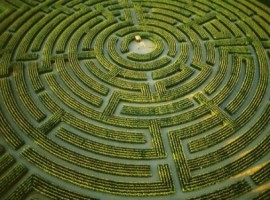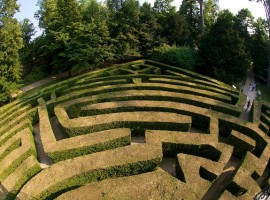Endless hedges that rise hiding the way forward: it is the challenge of running a maze. The orientation becomes difficult and you can not see the horizon, but these “natural enigmas” are true works of art. The labyrinth is a symbol that recurs often in human history. It is present in different cultures, myths and religions, but also in art and philosophy.
The history of labyrinths is complex, mysterious and fascinating, as are the structures of the mazes themselves. They appear in different cultures and at different times. Today the theme of the maze is very timely: to get lost to find yourself, living a new contact with nature, alone or with friends, with your loved one or with your children.
A bit of history: the origin of the myth
The maze is closely linked to the myth of Knossos. The myth of the first century BC describes the story of Theseus, who with the help of Ariadne kills the terrible Minotaur (half man, half-bull monster), hidden in the center of the maze of Knossos, in Crete. In greek myth, the labyrinth is a prison from which we can not escape.
The tantric art, in contrast, sees the labyrinth as the mental aspect of the mind. To the Egyptians, the maze is the structure of the universe and is often associated with death. In the island of Malekula, in the Pacific Ocean, the maze is a game of skill and in India, “Kolam” is a form of good luck.
In China, the maze has a function of defense against the onslaught of evil. In Korea, a maze contains and maintains the oldest Buddhist text. In Buddhism, the labyrinth is the image of the “mandala”, the process by which the cosmos was formed from its center. Through a complex symbolism, it allows a kind of initiatory journey that can be born from within. For the Masons, the maze is the image of introspection, soul searching; is the relentless pursuit of the truth that involves a long, difficult and usually solitary journey. The labyrinths, therefore, hide a variety of meanings, depending on the different civilizations.
The most beautiful green labyrinths in France
We’ve put together a selection of the most beautiful and spectacular labyrinths in France. For those who are running out of ideas here nine motions for a spring day of fun with your family or with your loved one.
1. The maze of Reignac-sur-Indre
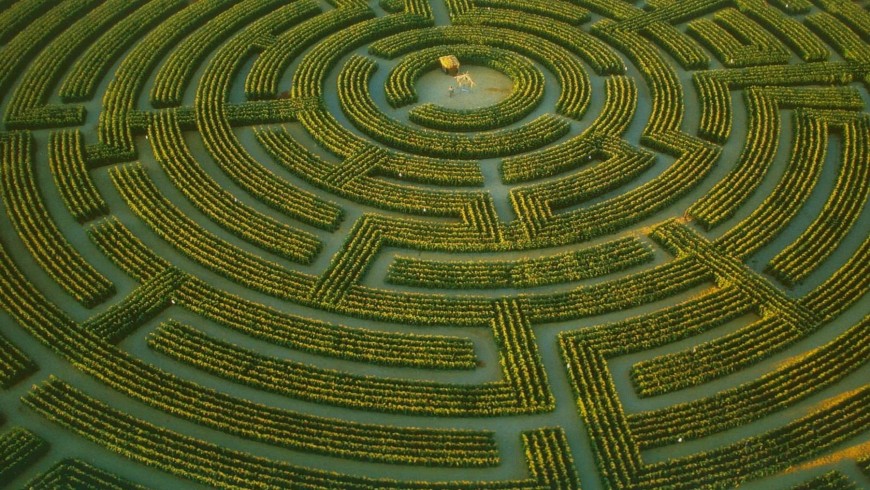
In the heart of the Loire Valley, the Reignac-sur-Indre maze is one of the largest labyrinths in the world! Opened in 1996, this green labyrinth occupies 4 hectares and is a real tourist attraction. It is made from corn and sunflowers, harvest in autumn. The following year the maze is reborn in a new form. All this is possible through a proven technique of sowing and marking. So it’s a maze of cereal!
2. The maze of château Villandry

The Villandry castle, which is located halfway between Tours and Azay-le-Rideau, is famous for its six charming gardens, among them a beautiful hedge maze. This typical Renaissance labyrinth symbolizes the journey of life and represents the meeting point with God. Today, the labyrinth and the five gardens are places of relaxation for adults and a nice playground for children.
3. The maze of château de Vaux-le-Vicomte

Situated 50 km from Paris, in the town of Maincy, the Château de Vaux-le-Vicomte is a seventeenth-century masterpiece. It provides a unique labyrinth designed by Duchene. This castle was the model for the construction of Versailles. It is a lovely place, especially for families who can explore the gardens and maze.
4. The maze of Bayeux
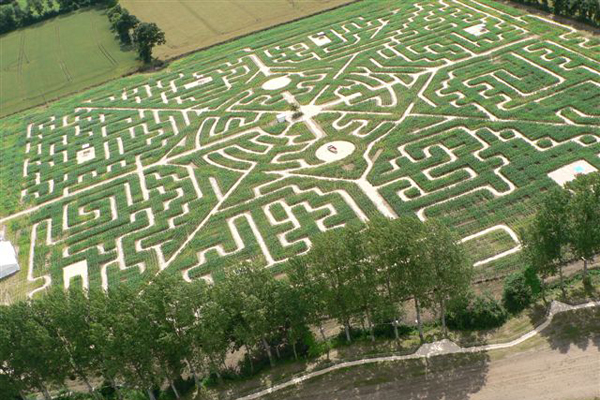
This labyrinth, which is located in Normandy, is made from corn and is the perfect place to let your children play. Each year the maze renews its theme; It will be wonderful to dive into a poetic journey.
5. The maze of Caen
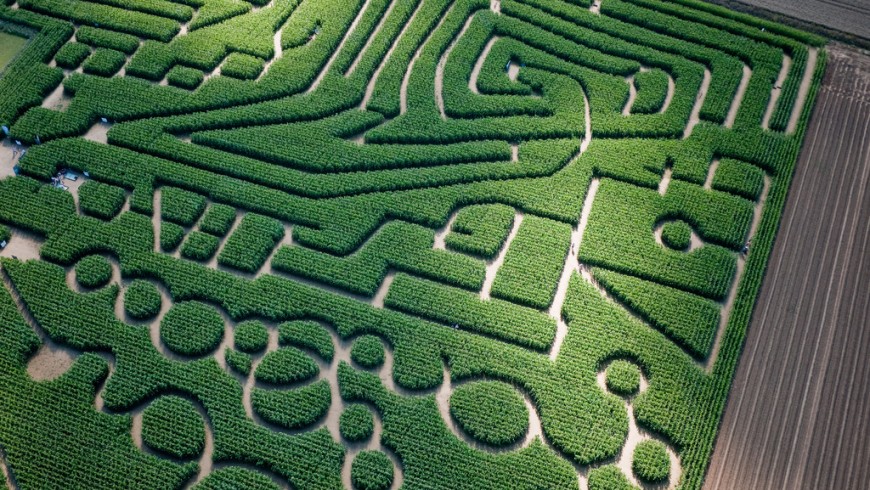
The maze of Caen, 10 minutes from Caen to Villons-les-Buissons, is a playground for the family for outdoors leisure time, consisting of four mazes. Every year you can find a different theme. To celebrate the 10th anniversary of the maze, the designers have proposed a fifth unusual maze, made of waste: to find your way, you have to answer questions about recycling and differentiation.
6. The maze of Coutances

Less than 5 km from Coutances, you can venture into a beautiful maze. More than a ride across the grain, it is an adventure to share with family or friends. Each adventurer must travel the five mazes to solve puzzles and unlock the next maze. A funny day open to all (ages 4 and older and for the whole family), which includes activities and pitfalls in a natural and unusual environment.
7. The maze of Miscanthus de la Baie
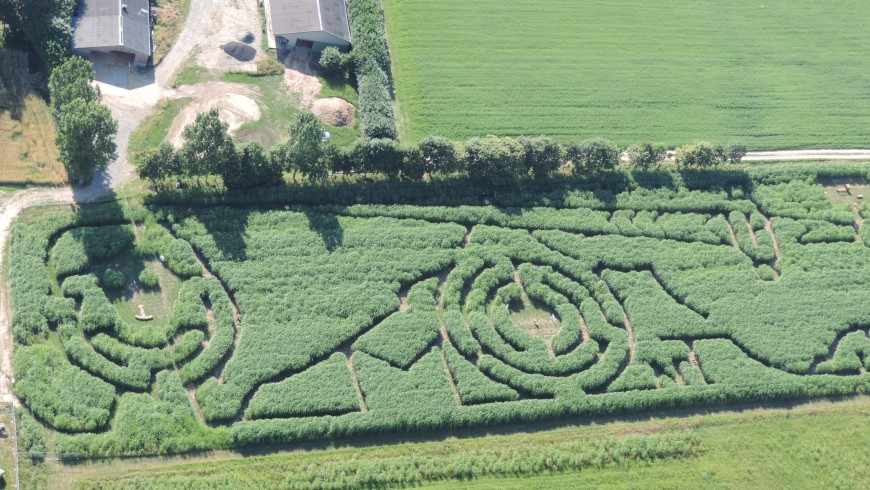
At the foot of Mont Saint Michel in Normandy, there Miscanthus maze, the only maze created with a plant that grows up to 4 meters high! There are two labyrinths: the first dedicated to the Tour de France and the second dedicated to the history of Mont Saint Michel.
9.The maze of Ribeauville
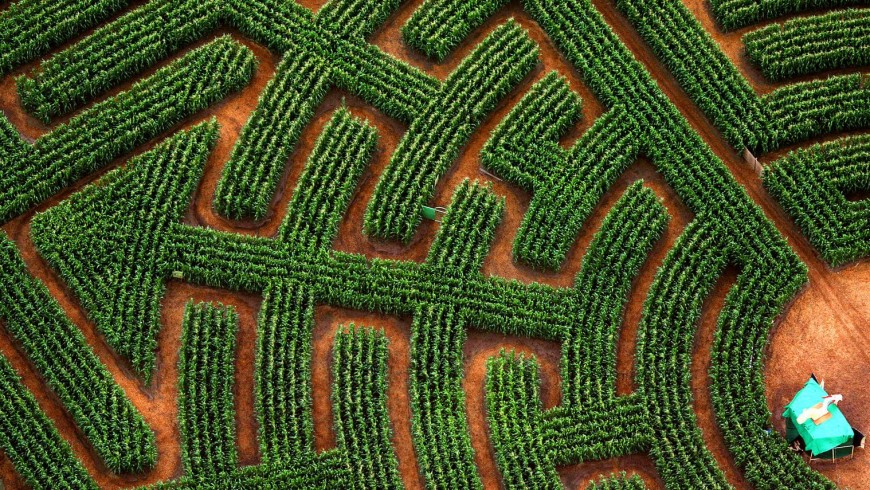
Located between the vineyards of Alsace, the Ribeauvillé labyrinth also known as The Grimm World.
Are you curious to find out these natural puzzles? Which maze you want to visit? Let us know!
Our short trip through the most charming and unique mazes from France just wants to be a fun opportunity to recover the ancient taste of the natural beauty. A good starting point for reviving these mysterious realities that have characterized the novels and stories of all time: the myth of getting lost to find themselves, as a metaphor for life.
Cover photo – credits: www.lovethesepic.com
